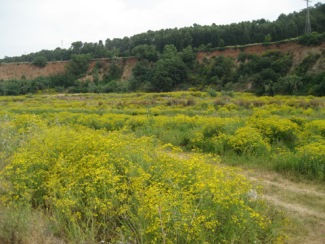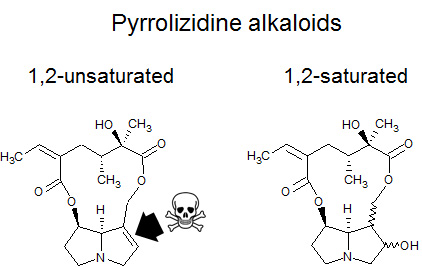Biology

Are Invasive Plants More Toxic than Native Ones?
Exotic plants can strongly affect the composition, structure and functioning of the invaded ecosystems and it seems that they are able to change their own chemical composition and toxicity. To determine whether these changes actually take place, the Chemical Ecology and Toxicology group at the UAB analysed the concentration of certain molecules of the Senecio pterophorus shrub, toxic to vertebrates and invertebrates, in plants collected in their native environment and in three non-native environments.
References
Castells, E.; Mulder, P.J.; Pérez-Trujillo, M. Diversity of pyrrolizidine alkaloids in native and invasive Senecio pterophorus (Asteraceae): implications for toxicity. Phytochemistry. 2014, vol. 108, p. 137-146. doi: 10.1016/j.phytochem.2014.09.006.
Biological invasions are one of the major threats affecting biodiversity worldwide. Exotic plants can strongly affect the composition, structure and functioning of the invaded ecosystems. One important aspect of biological invasions scarcely explored is the changes in plants chemical composition and toxicity after invasion. Changes in plant chemistry could have ecological and evolutionary consequences on the invaded ecosystems by modifying the interactions between plants and herbivores and facilitating invasion success. Some studies have shown an increase in plant toxicity after invasion but this trend is yet unclear.
In the Chemical Ecology and Toxicology laboratory at UAB we study the changes in chemical composition of alien plants using Senecio pterophorus as a model system. S. pterophorus is a native from eastern South Africa that was accidentally introduced in western parts of South Africa, Australia and Europe 40-100 years ago. In Catalonia, S. pterophorus is abundant near the Ripoll River in Sabadell (Top left figure) but it is also present in other semi-natural and natural environments in the Barcelona area. The genus Senecio is characterized by the presence of pyrrolizidine alkaloids, a group of secondary metabolites that are toxic to invertebrates and vertebrates, including humans, which function as plant chemical defenses.
Here we have analyzed the concentrations and composition of pyrrolizidine alkaloids from S. pterophorus plants collected at their native range (East South Africa) and three non-native ranges (West South Africa, Australia and Catalonia), including the entire worldwide distributional area for this species. Our objective was to determine whether plant chemical composition and toxicity changes after invasion.

Figure 1: Structure of S. pterophorus pyrrolizidine alkaloids.
Our results show that S. pterophorus has a high diversity and concentrations of pyrrolizidine alkaloids, including compounds from two subtypes: 1,2-unsaturated alkaloids, highly toxic due to the presence of a double bound, and the less toxic 1,2-saturated alkaloids (Figure 1). Chemical composition was highly variable depending on plant origin. Thus, plants from South Africa and Australia contained a mix of the two subtypes while in Catalonian plants only contained the less toxic subtype. Moreover, total pyrrolizidine alkaloids were highest in Australia. The increase in the relative and absolute concentrations of 1,2-unsaturated alkaloids in plants from Catalonia and Australia indicates that S. pterophorus is potentially more toxic in the invasive range than in the native range.
Top left figure: Senecio pterophorus near the Ripoll River in Sabadell.
Eva Castells
Grup d’Ecologia Química i Toxicologia
Department of Pharmacology, Therapeutics and Toxicology
2024 Universitat Autònoma de Barcelona
B.11870-2012 ISSN: 2014-6388
